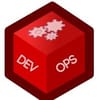Nodejs.org states node.js as
"Node.js is a platform built on Chrome's JavaScript runtime for easily building fast, scalable network applications. Node.js uses an event-driven, non-blocking I/O model that makes it lightweight and efficient, perfect for data-intensive real-time applications that run across distributed devices."
Node is a platform build on Google V8 java script engine with the goal to write network applications well suited for DIRT(data intensive real-time) applications. Its distinguished feature is that you can write code in asynchronous non blocking style with the benefit of being super scalable. Now lets understand event-driven and non blocking I/O models before we dive in to node.js.
What is event-driven ?
Event driven is a programming model where the program flow is based on events such as sensor outputs , or user events like mouse clicks , inputs from other messaging sources or threads etc. For more information on event-driven programming, you can read this blog post
What is Non Blocking I/O?
Non blocking operations does not block program executions. For instance, if you take node.js, it uses only one thread for all service requests. Every request arrives at the server will be serviced at a time. For example, when one request is processed to query the database, it will process the code to query the database and does not wait for the response, instead it sends a callback to the second queue and the code will continue running. When the database returns results, it will send a callback to the third queue and when the engine is freed, it will execute the pending requests in the third queue.
Installing node.js on Windows
1. Head over to http://nodejs.org/download/ page and downland the appropriate msi or exe package (32 0r 64 bit).
-
Install the downloaded package like you install any other windows package.
-
verify the installation by executing the following command in command prompt or powershell.
node --version
PS C:\Users\devopscube> node --version
v0.10.35Installing node.js on Linux platform
Node.js can be installed on Linux systems by two ways.
- From source code
- From native repository
Installing from apt repository
1. execute the following curl command for setup.
curl -sL https://deb.nodesource.com/setup | sudo bash -2. Install using apt-get
sudo apt-get install -y nodejsroot@devopscube:~# sudo apt-get install -y nodejs
.
.
.update-alternatives: using /usr/bin/rlwrap to provide /usr/bin/readline-editor (readline-editor) in auto mode
Setting up nodejs (0.10.35-1nodesource1~trusty1) ...3. verify the installation using the following the command.
node --versionroot@devopscube:~# node --version
v0.10.35Installing from source
1. Download the source from github.
git clone https://github.com/joyent/node.gitroot@devopscube:~# git clone https://github.com/joyent/node.git
Cloning into 'node'...
remote: Counting objects: 135493, done.
remote: Compressing objects: 100% (24/24), done.
remote: Total 135493 (delta 1), reused 23 (delta 1)
Receiving objects: 100% (135493/135493), 112.28 MiB | 14.53 MiB/s, done.
Resolving deltas: 100% (101171/101171), done.
Checking connectivity... done.2. Execute the following command to install node.js.
cd node && ./configure && make && sudo make installNote: You might get the following error while installing. If you do, install make and gcc using the command given below the error and execute the above command.
root@devopscube:~# cd node && ./configure && make && sudo make install
Node.js configure error: No acceptable C compiler found!
Please make sure you have a C compiler installed on your system and/or
consider adjusting the CC environment variable if you installed
it in a non-standard prefix.
The program 'make' is currently not installed. You can install it by typing:
apt-get install makeInstall make and gcc by executing the following commands individually.
sudo apt-get install -y make
sudo apt-get install -y gccCreating a simple web server application using node.js
In this section we will create a simple web server application running on port 80 for testing.
Create a file name server.js and copy the following contents on to the file.
var syslog = require("sys"),
my_server = require("http");
my_server.createServer(function(request,response){
syslog.puts("I got a server request");
response.writeHeader(200, {"Content-Type": "text/plain"});
response.write("Hurray! You just tried a simple nodejs Application");
response.end();
}).listen(80);
syslog.puts("Server Running on 80");The above code runs a web server on port 80 displaying the message we specified in the code. Before executing the code let see what each line does in the above code.
var syslog = require("sys")The above line loads the sys class in to syslog variable. We used this class output log in the console.
my_server = require("http");It loads the http library to perform the web server tasks.
my_server.createServer(function(request,response){
.
.
}).listen(80);This function accepts the requests on port 80 and displays the message specified in the code. Also whenever a request is made, the syslog object displays a message on terminal.
Lets run our web server application by executing the following node command.
node server.jsNow you will be able to access the server on port 80. Open a new terminal and make a request using curl to local host on port 80 to check if our application is running.
curl http://localhost:80You will get the message as output and the console will log the "I got a server request" message.
root@devopscube:~# curl http://localhost:80
Hurray! You just tried a simple nodejs Applicationroot@devopscube:~# node server.js
Server Running on 80
I got a server requestNow you have a running node.js application running on your system. There are many frameworks available for node.js web application development. Express.js is a matured node.js framework for application development. You can start with express.js if you are going to create an application using node.js.
Tell us what you think about this post in the comments section.


